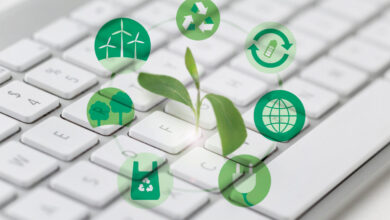Carbon-Neutral Packaging: A Solution for a Greener Future

The concept of carbon-neutral packaging, its importance, and how it can contribute to a greener future.
In recent years, the global community has witnessed a growing awareness of the environmental impact caused by various industries. As a result, there has been a significant shift towards sustainable practices, particularly in the realm of packaging. One such approach gaining traction is carbon-neutral packaging, which aims to minimize the carbon footprint associated with packaging materials and processes.
Understanding Carbon Neutral Packaging
Carbon-neutral packaging refers to the utilization of materials and practices that have a net-zero carbon emissions impact. It involves measuring the amount of carbon emissions produced throughout the lifecycle of a product’s packaging and compensating those emissions through carbon offset projects, such as renewable energy projects or reforestation initiatives.
The Importance of Carbon Neutral Packaging
Reducing Carbon Footprint

Packaging materials, manufacturing processes, and transportation contribute significantly to carbon emissions. Carbon-neutral packaging addresses these concerns by adopting sustainable materials, optimizing production methods, and reducing energy consumption, thus reducing the overall carbon footprint associated with packaging.
Climate Change Mitigation
Carbon emissions are a major contributor to climate change. By adopting carbon-neutral packaging, companies can actively participate in mitigating climate change by offsetting their carbon emissions. This helps in reducing greenhouse gas concentrations in the atmosphere, thereby curbing the adverse effects of global warming.
Meeting Consumer Demands
With increasing environmental awareness among consumers, there is a growing demand for eco-friendly products and packaging. Carbon-neutral packaging not only appeals to environmentally conscious consumers but also allows businesses to align their values with those of their target audience. This can lead to enhanced brand reputation and customer loyalty.
Key Strategies for Achieving Carbon Neutral Packaging
Material Selection
Choosing sustainable packaging materials is crucial for achieving carbon neutrality. This includes opting for renewable and biodegradable materials like recycled paper, cardboard, bioplastics, or compostable materials that have a lower environmental impact compared to traditional packaging options.
Energy Efficiency
Implementing energy-efficient practices in packaging manufacturing processes can significantly reduce carbon emissions. This involves using renewable energy sources, optimizing production lines, and adopting energy-efficient machinery to minimize energy consumption and associated emissions.
Carbon Offsetting

Carbon offsetting plays a vital role in achieving carbon neutrality. Companies can invest in renewable energy projects such as wind or solar farms, which generate clean energy and help offset the carbon emissions associated with packaging production and distribution. Another effective approach is supporting reforestation initiatives that sequester carbon dioxide from the atmosphere.
Life Cycle Analysis
Conducting a comprehensive life cycle analysis of the packaging can identify areas of improvement. By evaluating the environmental impact at each stage, including raw material extraction, manufacturing, transportation, and end-of-life disposal, businesses can identify opportunities to reduce emissions and optimize the packaging’s sustainability.
Benefits
Environmental Benefits
Carbon-neutral packaging significantly reduces greenhouse gas emissions, conserves natural resources, and minimizes waste generation.
Competitive Advantage
Adopting carbon-neutral packaging can give businesses a competitive edge by appealing to environmentally conscious consumers. It demonstrates a commitment to sustainability, which can attract new customers, enhance brand loyalty, and drive sales growth.
Cost Savings
While transitioning to carbon-neutral packaging may require initial investments, it can lead to long-term cost savings. Energy-efficient practices reduce operational expenses, and optimizing packaging design can result in material savings and streamlined logistics.
Conclusion
Carbon-neutral packaging is an effective strategy for reducing the environmental impact of packaging materials and processes. It not only helps mitigate climate change but also aligns with consumer demands for eco-friendly products. As companies increasingly embrace carbon-neutral packaging, they can pave the way for a more sustainable and responsible packaging industry.
In India, many FMCG brands are implementing carbon-neutral packaging with the game-changing solutions offered by The Disposal Company. Click here to know more.




